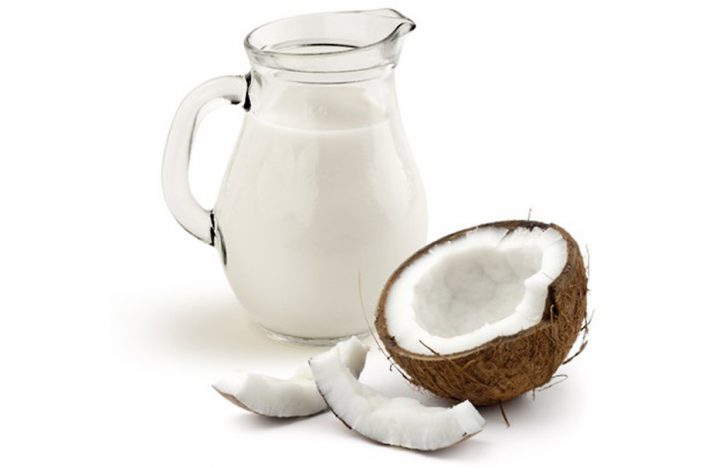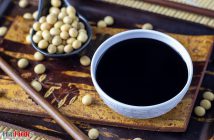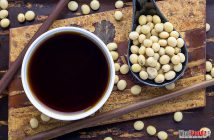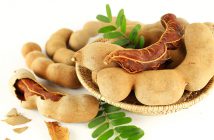The terms of thick coconut milk, coconut milk and thin coconut milk are always mentioned in any Thai cookbooks. How to define these terms? Let’s see.
Wet-heat cooking technique often requires either water-base liquid or steam. However, in Thai cookery, the Thais sometimes make use of coconut milk as based liquid, especially in making most of Thai curries. The use of coconut milk in Thai curries is a hallmark of Thai culinary art of cooking. The white flesh of mature coconuts is scrapped with either hands on a simple coconut grater in Thai style or an electric machine. The freshly-finely grated coconut is combined with a little warm water and then squeezed by two hands to press out the thick coconut milk or หัวกะทิ (Hua ka thi) in Thai. This grated coconut can be combined with a certain amount of water and squeezed a second and third time to obtain less rich milk, coconut milk or กะทิ (ka thi) and thin coconut milk or หางกะทิ (hang ka thi) respectively.
For those who wish to avoid the bother of scrapping and squeezing this, many reputable Thai brands of 100% coconut milk sold in cans and Tetra Paks are widely available. However, many Thai cookbooks often mention to this milk in terms of coconut milk, thick coconut milk and thin coconut milk that may make you doubt with. Therefore, I would give you their definition and the ways to prepare them separately as the details below.
- Thick coconut milk (sometimes called coconut cream); When labelled as 100% coconut milk on its package, it can be used as thick coconut milk.
- Coconut milk can be prepared by mixing one part of 100% coconut milk with one part of water.
- And thin coconut milk (sometimes called light coconut milk) is required one part of 100% coconut milk per three parts of water in preparation.





